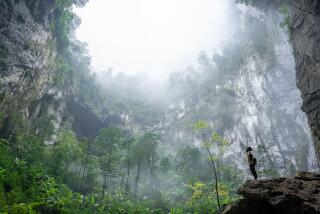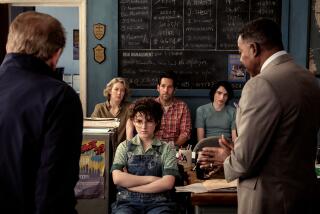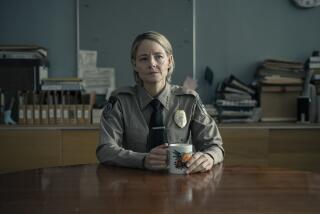Television review: ‘Frozen Planet’ on Discovery Channel
The first thing to say about “Frozen Planet,” a documentary about life at the poles that begins its multipart run Sunday on Discovery Channel, is that it is gorgeous to behold: lump-in-throat, tear-in-eye beautiful. It is the very point of such documentaries to be beautiful, of course, and not merely to honor, record and convey the awesome majesty of the natural world but also to look good on that big, expensive television set you bought yourself for Christmas.
Like “Planet Earth” (2006) and “Life” (2009) before it, it was made by the BBC Natural History Unit — the Impossible Mission Force of nature documentarians — and has already aired in a slightly different cut in the U.K. Original narrator David Attenborough, a beloved naturalist and TV personality, has been replaced by Alec Baldwin, who is not a naturalist but does provide the American voice that makes this co-production seem homegrown.
Attenborough is, however, the on-camera host of the series’ final episode, “On Thin Ice,” which will address global warming and what it might mean not just for the creatures who live in the Arctic but the creatures who live where you live. This hour was unavailable for review; there were early reports that Discovery was not going to air it, or would splice parts into other episodes, but it is coming to these shores apparently intact.
Like most every nature documentary, whether about cats and dogs or lions and tigers, it is made to reveal a world few people will ever see or, indeed that anyone is capable of seeing with the naked eye. There is a good deal of slow-motion footage, which highlights the power and grace of the animal subjects and has the practical effect of making what might be a few snatched seconds of real time last much longer. The artfully composed images are both crystal clear and cinematically creamy.
The extremes of the Arctic and Antarctic intensify the cycles of freeze and thaw, of making hay while the sun shines and catching up on sleep when it doesn’t, that operate more gently in the temperate zones. These are lands of big numbers and proportions: of whales; of ice chunks the size of skyscrapers; of the taiga, a globe-circling forest that contains almost one-third of all the trees on the planet; and of sponges in the Antarctic ocean, some of which are “10,000 years old and grow as big as a mid-sized car.”
The filmmakers look for stories to follow, where possible tracking families or herds through the seasons. Polar bears learn to swim; an albatross figures out how to fly; a woolly bear caterpillar works year after year to store up the energy that will allow it to become a moth for just a few days (then pfft). Narwhals navigate an ice-bound traffic jam, beluga whales exfoliate on the shallow seabed, seals gnaw holes in the ice to find room to breathe. And there are penguins, naturally, still the world’s most hilarious bird. (Sorry ostrich people, they are.)
And there is the ice itself — glaciers that carve their way through mountains, icebergs that might have been sculpted by Henry Moore, crazy crystal caves inside an active volcano, and the deadly brinicle, scourge of starfish, an “ice finger of death” that grows down to the ocean floor, freezing whatever is too slow to get out of its way.
Death, of course, is part of the story, from bad weather, from lack of food, or from becoming food. There is the usual difficulty in knowing whether to root for the predators and the prey — everybody’s got to eat, and everybody wants to live — and sequences in which wolves hunt bison and killer whales go for seal play out at what seemed to me excruciating length. This footage is, of course, gold for filmmakers, who spent four years making “Frozen Planet” in hopes of capturing such moments — but this is why I don’t watch more nature documentaries.
What else do we learn or remember here? That all baby animals are cute. That the arrangements that fauna and flora have evolved with their environment over the ages are remarkable and poetic and apt. Even the few humans who live in this harsh land tend to live cooperatively with it, having “had to forge alliances with other species.” It is the uncooperative, remote rest of us that are the problem.
More to Read
The complete guide to home viewing
Get Screen Gab for everything about the TV shows and streaming movies everyone’s talking about.
You may occasionally receive promotional content from the Los Angeles Times.







